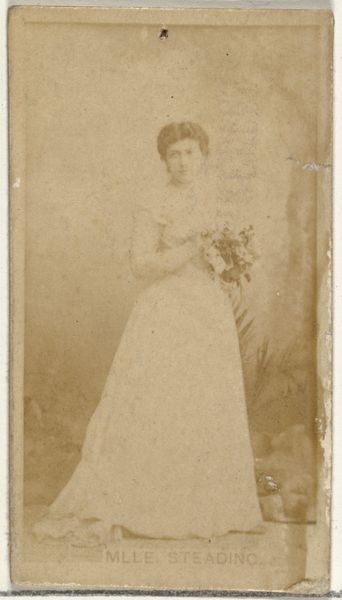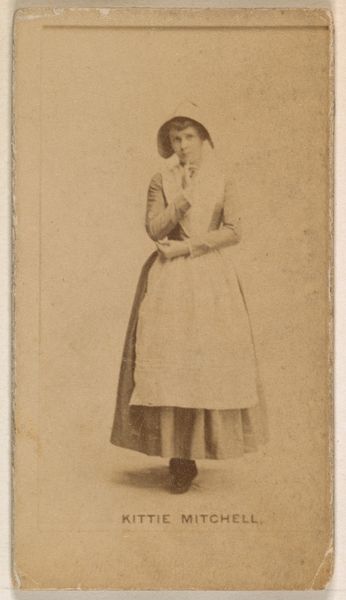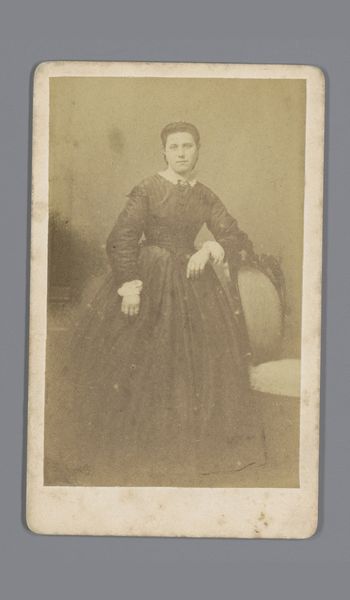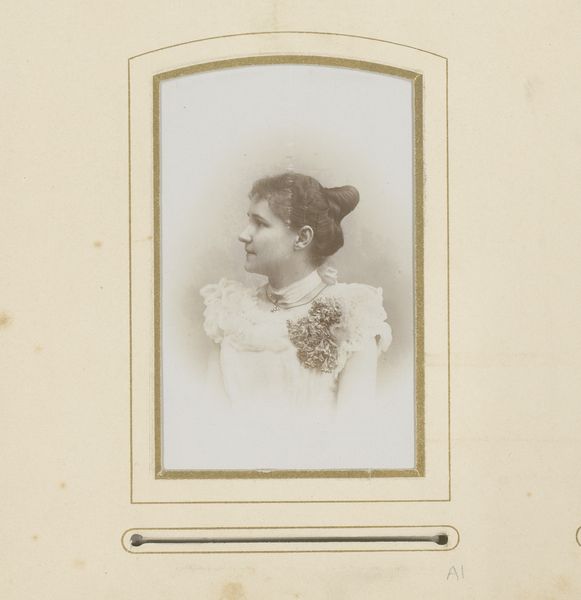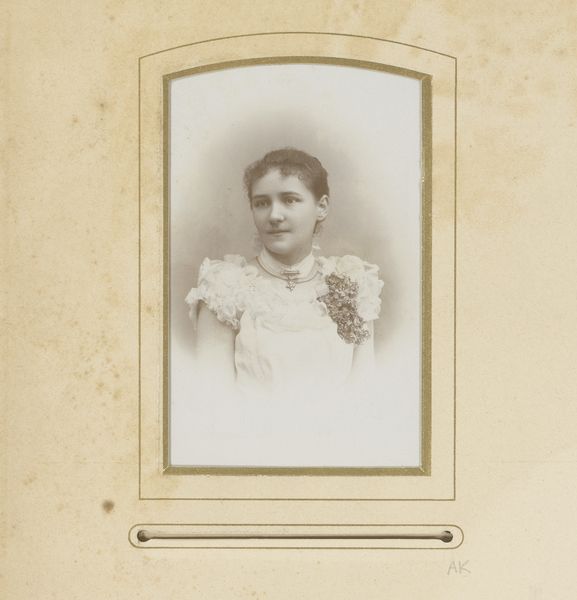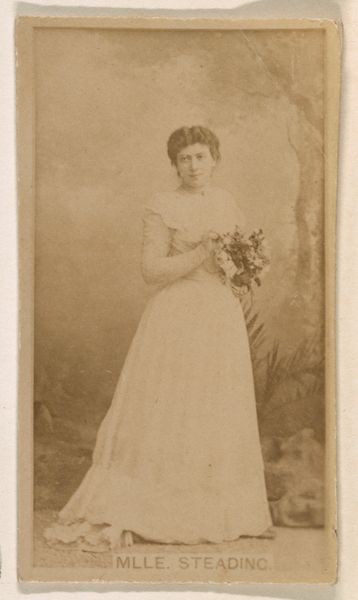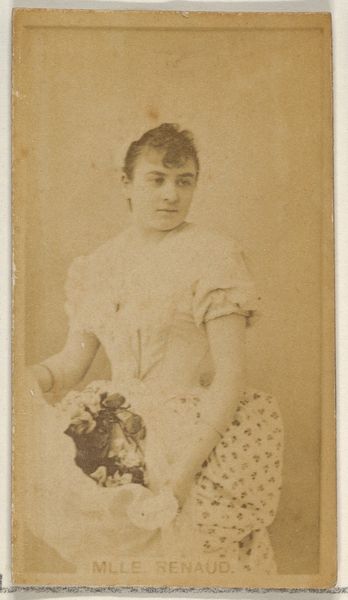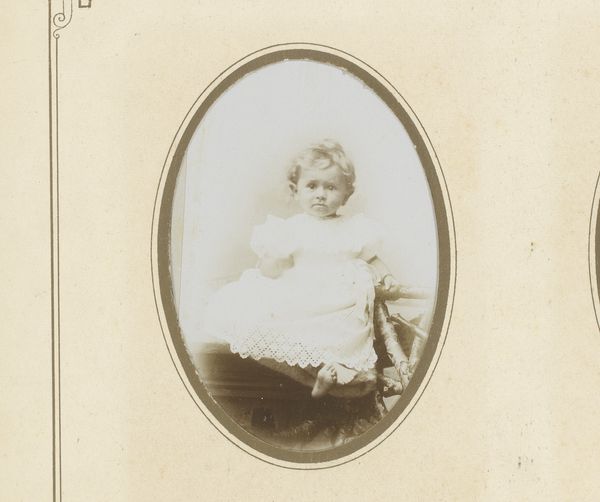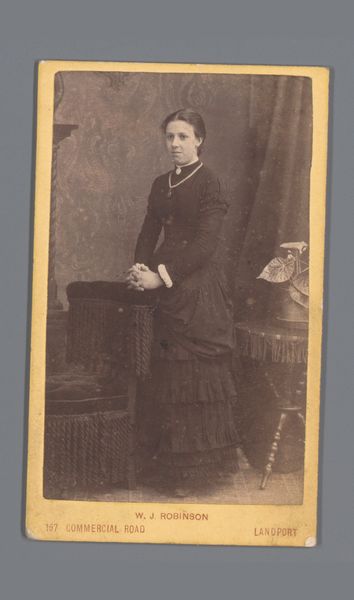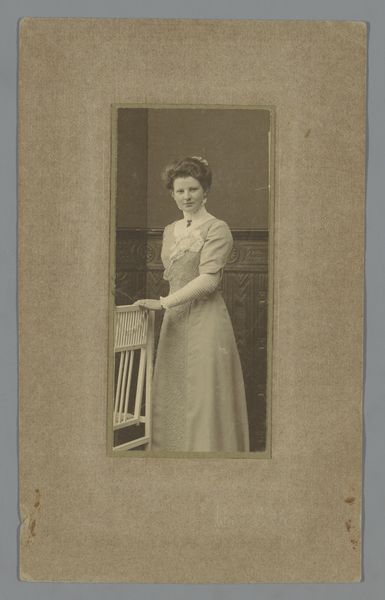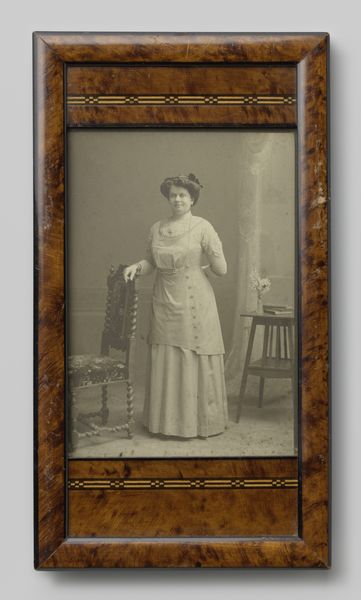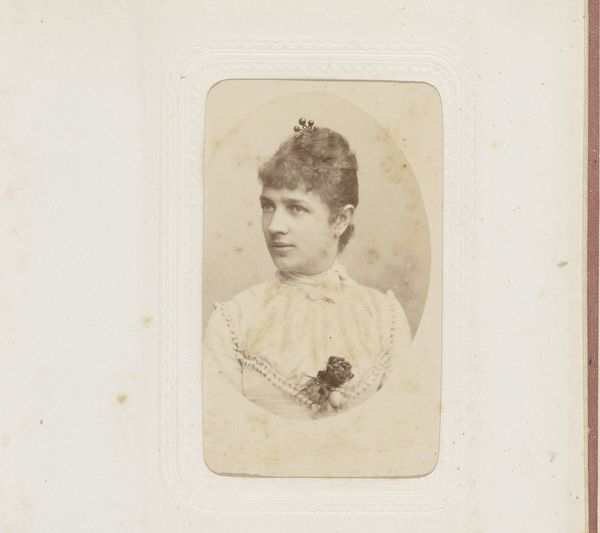
photography, albumen-print
#
portrait
#
wedding photograph
#
photography
#
historical fashion
#
white focal point
#
wedding dress
#
albumen-print
Dimensions: height 164 mm, width 107 mm
Copyright: Rijks Museum: Open Domain
This carte-de-visite photograph by Max Stierle captures an unknown woman, likely made in the late 19th century, using photographic techniques of the time. Consider the material reality of this small card. It’s a mass-produced object, a result of the industrialized photography that emerged in the mid-19th century. The surface is smooth, the image crisp, achieved through chemical processes that democratized portraiture. Before photography, portraits were the domain of the wealthy, but this card suggests a shift – a wider segment of society now had access to image-making. The patterned backdrop hints at a studio setting, a controlled environment where the subject could be presented in a particular light. But even within this controlled space, there's a sense of individuality. The woman's dress, her hairstyle, and her expression all speak to a personal identity being constructed within the frame. These photographs were often collected and traded, becoming part of a wider culture of image consumption. By considering the materials and the making of this photograph, we can reflect on the social and economic forces that shaped its creation and circulation.
Comments
No comments
Be the first to comment and join the conversation on the ultimate creative platform.

